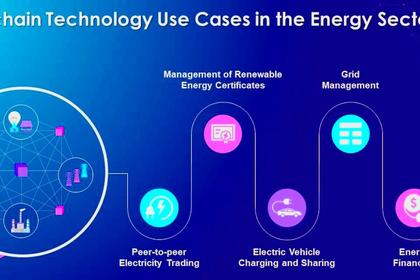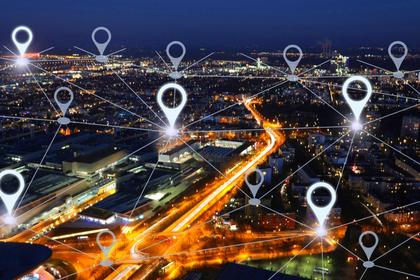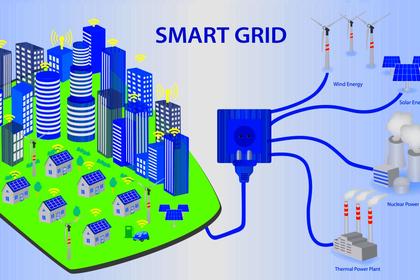
DIGITAL COMMUNICATIONS FOR ENERGY

By KENNETH RABEDEAU Head of Energy Segment, North America, Nokia
ENERGYCENTRAL - Sep 27, 2023 - Power utilities are working to modernize their operations and build greener and more resilient grids for the future. To succeed, they need communications networks that will be reliable and cost effective to meet the connectivity demands of workers, physical assets and digital applications in all parts of the grid.
Today, many utilities rely on a diverse mix of wireless connectivity technologies to support grid communications. This approach is complex and expensive. Utilities may find it challenging to keep all these different technologies up to date and ensure that they can continue to work together. Utilities may also have difficulty adapting their technology mix to support new applications, particularly digital applications.
Given all this, it’s no surprise that power utilities are increasingly interested in deploying modern well vetted private wireless networks. With the latest private wireless, utilities can safely replace their myriad wireless technologies with one industrial-grade network powered by 4G LTE or 5G NR. This network can meet the performance and reliability demands of all legacy systems, connect everyone and everything across the grid, and provide a high-performance connectivity foundation for new Industry 4.0 and smart grid use cases.
The industry understands the move to private wireless can be challenging. A utility needs experienced partners that can help design and implement an successful 4G LTE/5G NR wireless network. The new network must fit within the utility’s unique operating environment and address its unique needs in terms of performance, coverage, flexibility, reliability, resilience and use case support, while the design must also deliver the benefits that the utility expects to get from private wireless.
Benefits of utility private wireless networks
Each power utility has its own specific priorities for wanting to deploy a private wireless network. However, many are attracted by five core benefits relating to device and solution availability, reliability, cybersecurity, control and sustainability.
1. Mature 3GPP technology ecosystem
4G LTE and 5G NR are well-established technologies around the world. Utilities can future-proof their investments by taking advantage of a large, globe-spanning ecosystem of vendors, integrators and consultants that can support the deployment and operation of radios, core network elements and devices. The LTE industrial device ecosystem alone includes more than 6,800 types of devices beyond phones.
2. One reliable mission-critical network for all use cases
LTE is a standards-based technology that has been proven for well over a decade in communication service provider (CSP) networks worldwide. As it evolves to 5G, the network will cater to higher-capacity, lower-latency connectivity with five-nines availability to every part of a complex, interference-prone industrial site. The predictable performance of LTE/5G can be trusted for utility mission-critical use cases, including mobility.
With LTE, a utility can meet the connectivity demands of any current or future use case with a single network. Some of these use cases will be funded from the start, and others will evolve as utility priorities allow. Private LTE gives utilities the freedom to prioritize use cases in the order that works best for them.
Because LTE is a standards-based technology, it ensures that utilities will get stable, future-proof performance and cutting-edge capabilities. LTE currently supports approximately 85 percent of industrial use cases. Utilities can confidently deploy private LTE networks today and upgrade to 5G when the time is right.
3. Simpler, stronger cybersecurity
By supporting all use cases, a private LTE or LTE/5G network enables a utility to define one cybersecurity posture for the entire grid communications network. The utility can also define cybersecurity postures for each application. This simplicity contrasts with current grid communications approaches, in which cybersecurity measures can account for different combinations of wireless technologies.
The LTE and 5G standards can offer strong cybersecurity features. For example, built-in encryption and authentication capabilities make private LTE/5G a more secure choice than Wi-Fi for mission-critical or business-critical applications.
4. A closed-loop network
Supporting all use cases on one communications technology creates a closed-loop network environment that is more reliable, stable and scalable, easier to manage, and more resistant to external changes. With private wireless, utilities can control who and what has access to the grid communications network and keep their sensitive data safe. This also allows for collaboration or corroboration across data flows or applications to support real time automation and situational status of all assets.
5. Improved environmental, social and governance performance
A bonus for utilities is that CSPs have already done much legwork in deploying LTE and 5G technologies and showing that they can be an effective and sustainable enabler for a variety of applications. In choosing a private LTE/5G network, utilities get a proven technology that meets the connectivity demands of their priority use cases, to make their networks and grids more environmentally friendly, and even impact their carbon footprint or NetZero strategies.
Key use cases enabled by utility private wireless networks
Utilities can take advantage of the improved capacity, latency, reliability and coverage provided by LTE/5G-based private wireless to achieve their ambitions with any combination of use cases. These use cases may include:
- Distribution automation, including traditional and IEC 61850 SCADA
- Advanced metering infrastructure (AMI)
- Rich group communications such as push-to-talk (PTT) and push-to-video (PTV)
- Mission-critical voice services
- CCTV-enabled security and safety monitoring (NERC CIP compliance)
- Synchrophasor, fault location, isolation and restoration (FLISR), and wide area monitoring systems (WAMS)
- Distributed generation and storage, including electric vehicle (EV) charging stations
- Micro grids and home area networks
- Smart poles and sensors
- The truck of the future: voice, video and data
- Falling power line protection
- Drones and unmanned aerial vehicles (UAVs)
- Back-office applications, remote coverage and leased line replacement
Best practices for building a utility private LTE/5G network
A private wireless network is made up of four key elements: a radio access network (RAN), a core architecture, a backhaul network and access to spectrum. To get full value from private wireless, utilities need to pay particular attention to spectrum acquisition, RAN design and equipment selection.
Acquiring spectrum
Spectrum comes first. A utility needs to gain access to spectrum before it can build a private wireless network. The ideal approach is for a utility to identify and prioritize the use cases it wants to support, and then search for spectrum that suits the requirements of these use cases. Utilities may have less success if they acquire spectrum first and then search for use cases that can leverage it.
Unlike CSPs, typically utilities don’t bid on spectrum. Instead, they must take advantage of spectrum that regulators designate for industrial use or buy it from private spectrum holders. Another option for utilities is to use shared or unlicensed spectrum bands such as the Citizens Broadband Radio Service (CBRS) or the global 5 GHz band.
Anterix (ATEX) is one of the leading holders of private spectrum for mission-critical industries in the United States. It offers low-band spectrum and is an excellent partner to utilities seeking to unlock the value of private wireless networks.
Utilities can take cues from the ways that CSPs approach spectrum selection and deployment. For example, they can start with an anchor layer of low-band spectrum (below 1 GHz) for distance, add a layer of mid-band spectrum (6 GHz) for capacity, and then add millimeter wave (mmWave) spectrum if needed for applications that require very high data rates with very low latency. The majority of utilities will not need mmWave spectrum.
Designing the RAN
Radio design makes a critical difference to the performance of a private wireless network and the value that a utility will get from it. The aim should be to create a RAN that will address the use cases that the utility wants to prioritize in the short and long terms.
The RAN design process for a utility private wireless network should include consideration of:
- Use cases and coverage/capacity requirements
- The spectrum band to meet the use case requirements
Tower locations, including backhaul and power options/overall site solution
- Future 5G migration and capacity scenarios
For example, a good RAN design will consider what measures the utility needs to take to maintain grid operations if there is a failure in the network. This may include backup batteries or generators that can maximize uptime while the utility repairs or restores systems. A good design will also have an eye on the future and aim to ensure a smooth evolution to concurrent LTE and 5G Standalone (SA) deployments. With a well-though-out, purpose-built RAN design, a utility can improve reliability, performance and power efficiency, and deliver on its chosen use cases.
Choosing network equipment
Power utilities will need to use a combination of radio technologies—macro radios, small cells, and microwave transceivers—to implement their RAN designs. An ideal solution will use radios that can support the frequency bands to enable easy, software-driven upgrades, reduce space and power consumption, and provide flexible deployment options.
Utilities also need baseband units (BBUs) that can support high performance, capacity and data throughput. These BBUs need to be simple to deploy, scale and upgrade. They also need to provide future-proof capabilities in compact form factors that have effective cooling options.
Essential components for a utility private LTE/5G network
To get the most from a private LTE or 5G network, a utility needs partners that offer proven expertise in private wireless RAN design, deployment and operations. Working with their partners, utilities should focus on designing and building RAN solutions that can support their chosen use cases with:
- High performance and superior experiences enabled by best-of-breed hardware and software platforms
- Efficiency at scale enabled by automation that optimizes grid operations to improve KPIs and lower costs
- Future-ready networking enabled by common software that delivers feature parity and platforms that can evolve to support 5G-Advanced and 6G
-----
Earlier:

















